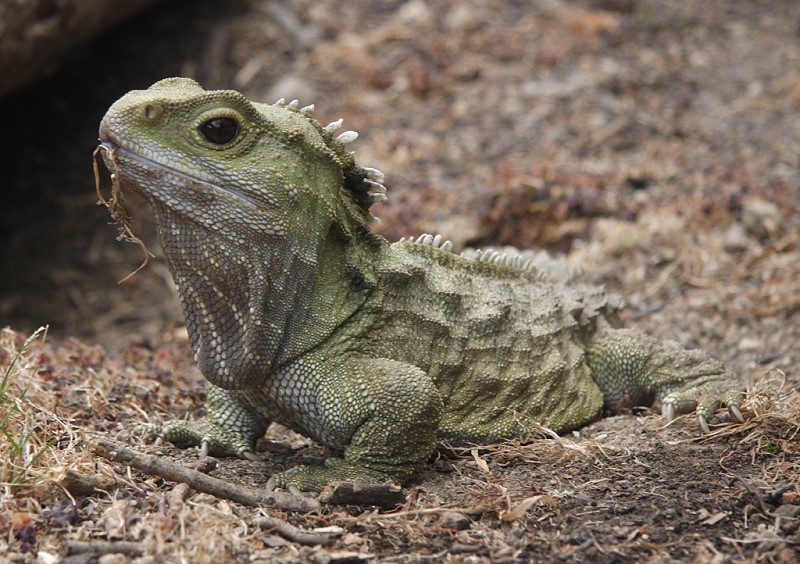 |
| The tuatara (Sphenodon) |
The specimens, consisting of jaw bones with associated teeth, were initially identified by Professor Rainer Schoch from the Staatliches Museum für Naturkunde in Stuttgart, as belonging to a new species.
Yet earlier this year a team of palaeontologists, led by Dr Marc Jones from UCL, conducted a more in-depth study of the bones. They found that the 240 million year old fossils belonged to a creature which was ancestral to all three groups of lepidosaurs, demonstrating that the lineage of the tuatara extends all the way back into the early Triassic. What makes the fossils so important, however, is what they tell us about the origins of lepidosaurs as a whole.
Previously, palaeontologists estimated that the group first evolved 290 million years ago. This number was derived from examining what are known as molecular clocks. As the clock 'ticks', mutations in the DNA of an organism accumulate and by measuring the rate of mutation in two different creatures, it is possible to identify when they shared a common ancestor. Yet the figure of 290 million seemed far too high.
 |
| The 240 million year old lepidosaur from Vellberg Germany and an artist's impression of what the creature would have looked like. |
This makes sense considering events prior to their evolution. If they had evolved 290 million years ago then they would have had to have survived the Permian Great Dying, the greatest mass extinction in the history of the planet, which decimated the reptiles.
Instead, the Vellberg jaws showed that lepidosaurs most likely appeared after the Great Dying 240 million years ago in the Triassic when new ecological niches available for exploitation existed, before giving rise to the modern groups during the late Jurassic when the reptiles underwent a wave of evolutionary innovation.
'The fossil record of small animals such as lizards and frogs is very patchy' said Professor Susan Evans from the UCL Department of Cell and Developmental Biology. 'Hopefully, this new fossil site in Germany will eventually give us a broader understanding of what was going on at this time.' The Vellberg jaws represented the first step in gaining this broader understanding. The tuatara, carrying its 150 million year old unchanged legacy, is the last step. Now it's a case of working out what happened in between......